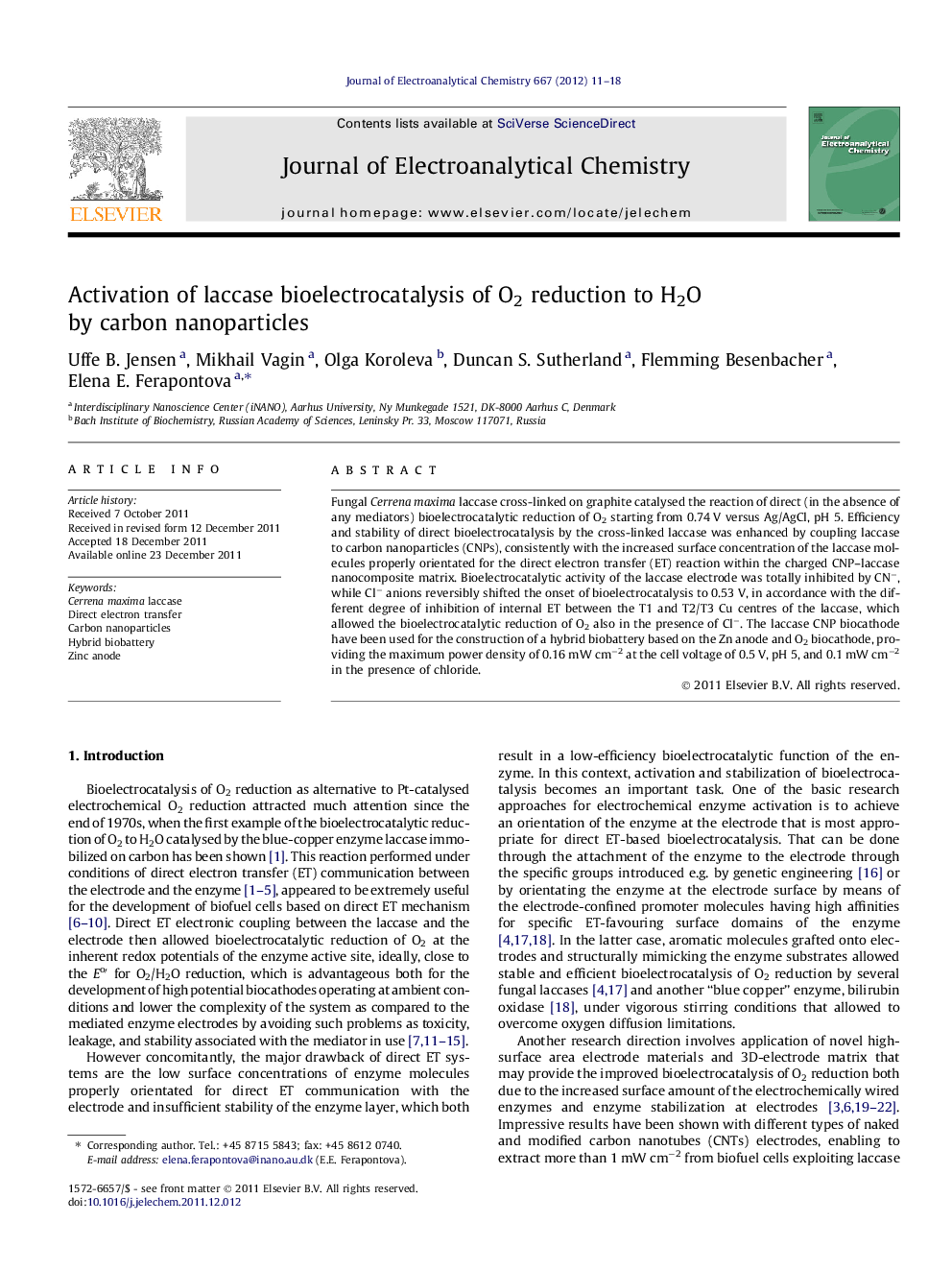| Article ID | Journal | Published Year | Pages | File Type |
|---|---|---|---|---|
| 219344 | Journal of Electroanalytical Chemistry | 2012 | 8 Pages |
Fungal Cerrena maxima laccase cross-linked on graphite catalysed the reaction of direct (in the absence of any mediators) bioelectrocatalytic reduction of O2 starting from 0.74 V versus Ag/AgCl, pH 5. Efficiency and stability of direct bioelectrocatalysis by the cross-linked laccase was enhanced by coupling laccase to carbon nanoparticles (CNPs), consistently with the increased surface concentration of the laccase molecules properly orientated for the direct electron transfer (ET) reaction within the charged CNP–laccase nanocomposite matrix. Bioelectrocatalytic activity of the laccase electrode was totally inhibited by CN−, while Cl− anions reversibly shifted the onset of bioelectrocatalysis to 0.53 V, in accordance with the different degree of inhibition of internal ET between the T1 and T2/T3 Cu centres of the laccase, which allowed the bioelectrocatalytic reduction of O2 also in the presence of Cl−. The laccase CNP biocathode have been used for the construction of a hybrid biobattery based on the Zn anode and O2 biocathode, providing the maximum power density of 0.16 mW cm−2 at the cell voltage of 0.5 V, pH 5, and 0.1 mW cm−2 in the presence of chloride.
► Cerrenamaxima laccase as bioelectrocatalyst for direct (unmediated) reduction of O2 to H2O. ► Activation of laccase bioelectrocatalysis by carbon nanoparticles (CNPs). ► CNP operating as a relay for electron transfer between the electrode and laccase. ► Low inhibition of laccase bioelectrocatalysis by chloride. ► Zn/O2(laccase-CNP) biobattery yields 0.16 mW cm−2 in stagnant aerated solutions.
